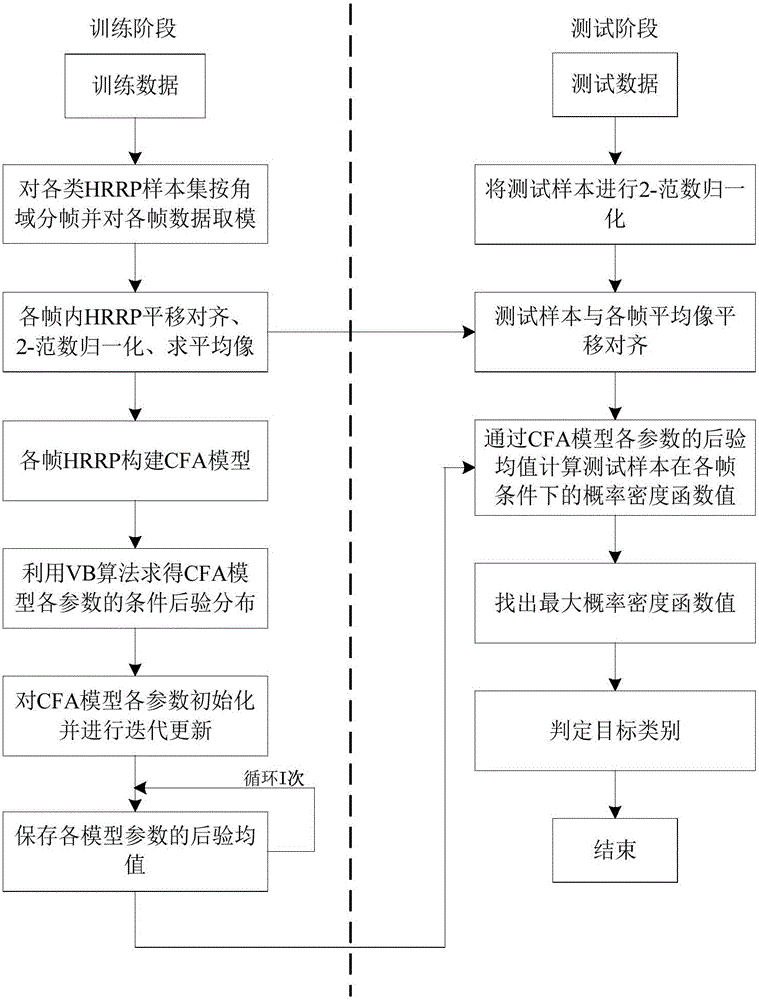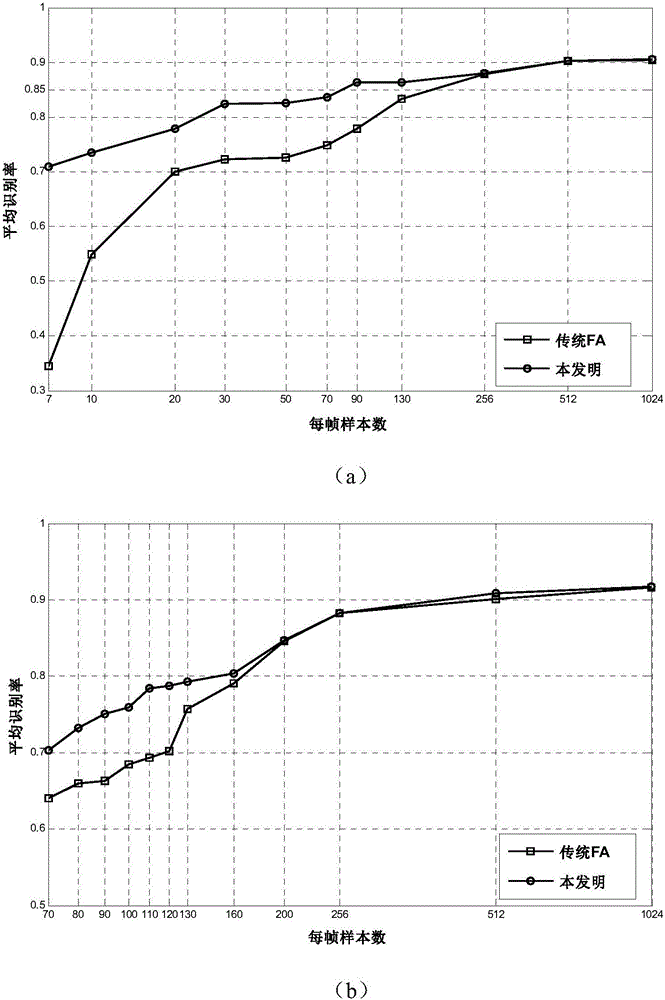Radar high resolution range profile (HRRP) target recognition method based on convolution factor analysis (CFA) model
A high-resolution range profile and factor analysis technology, applied in the field of radar, can solve the problems of reduced recognition performance, increased model complexity, and poor model parameter estimation accuracy, to ensure recognition performance, reduce model complexity, and reduce the number of dictionary atoms. number reduction effect
- Summary
- Abstract
- Description
- Claims
- Application Information
AI Technical Summary
Problems solved by technology
Method used
Image
Examples
Embodiment Construction
[0026] Reference figure 1 The statistical identification method of the present invention is divided into two stages of training and testing, and the specific steps are as follows:
[0027] 1. Training steps
[0028] Step 1. Framing the received radar high-resolution range profile HRRP according to the angle domain and take the modulus to obtain the time domain features
[0029] The one-dimensional high-resolution range profile HRRP captured by the radar is divided into multiple data segments at equal intervals according to the target azimuth, and the data segments with relatively complete azimuth angles are selected for training. Each segment is called a frame, and the remaining segments are tested; The training samples after the frame are modulated to obtain their temporal characteristics.
[0030] Step 2: Perform intensity normalization, translation alignment, and average image preprocessing on the high-resolution range profile HRRP training data in each frame.
[0031] 2a) Normaliz...
PUM
 Login to View More
Login to View More Abstract
Description
Claims
Application Information
 Login to View More
Login to View More - R&D
- Intellectual Property
- Life Sciences
- Materials
- Tech Scout
- Unparalleled Data Quality
- Higher Quality Content
- 60% Fewer Hallucinations
Browse by: Latest US Patents, China's latest patents, Technical Efficacy Thesaurus, Application Domain, Technology Topic, Popular Technical Reports.
© 2025 PatSnap. All rights reserved.Legal|Privacy policy|Modern Slavery Act Transparency Statement|Sitemap|About US| Contact US: help@patsnap.com



